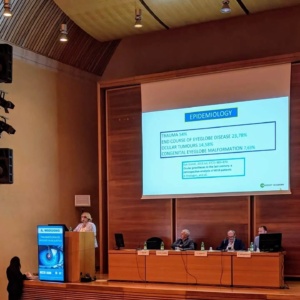What is microphthalmia?
The word microphthalmia means a smaller eye than normal from birth which is manifested by a difficulty in opening the eyelids.
Sometimes the diameter of the iris is smaller and/or of a different colour and the eyelids can be shorter than in the contralateral eye.
Microphthalmia is a congenital malformation which can affect one or both eyes and may be associated with other congenital malformations of other parts of the body.
For this reason, the child must undergo a general specialised check-up.
Microphthalmia can be associated with congenital cataract, glaucoma or other ocular malformations.
Children born with microphthalmia must be visited by a specialist paediatric eye doctor, to evaluate both eyes with a detailed specialised visit.
In the case of a diagnosis of blindness in the affected eye (or in both eyes) a rehabilitative prosthetic path can be started, foreseeing the insertion of prostheses of ever-increasing size up to the attainment of symmetry between the two eyes.
In the case of microphthalmia the attainment of a good aesthetic result is easier because the malformation only rarely affects the eyelids which are therefore more easily extendible.
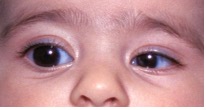
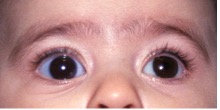
Left microphthalmia before and after the first prosthetic fitting.
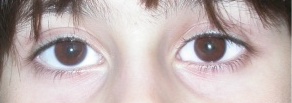
Result at the age of 8
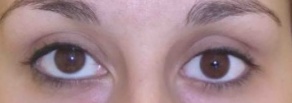
Result at the age of 20
The movement of the prosthesis depends upon the presence of the small eye which moves under the prosthesis, therefore in the case of congenital anophthalmia the movement is less than in cases of microphthalmia where the movement is often excellent.
A child born with monocular vision has no difficulty in movements because its brain has become used to receiving stimuli from just one side and has thus developed a different sense of space permitting it to orientate itself as if he/she were actually seeing with both eyes.
We teach children to manage their prosthesis on their own from the age of 4 or 5. Children can practise any sport and leisure activities they wish wearing the prosthesis.



